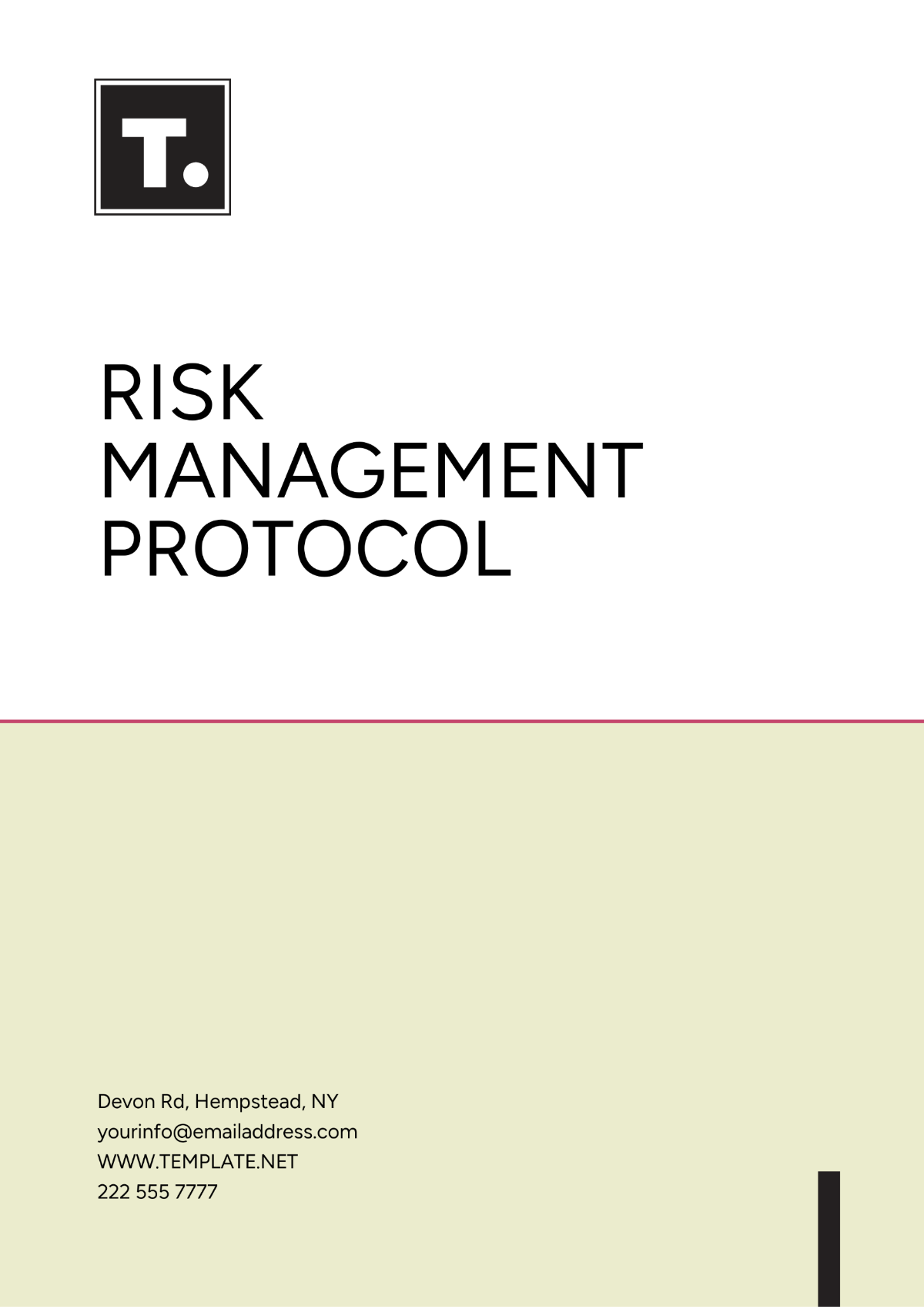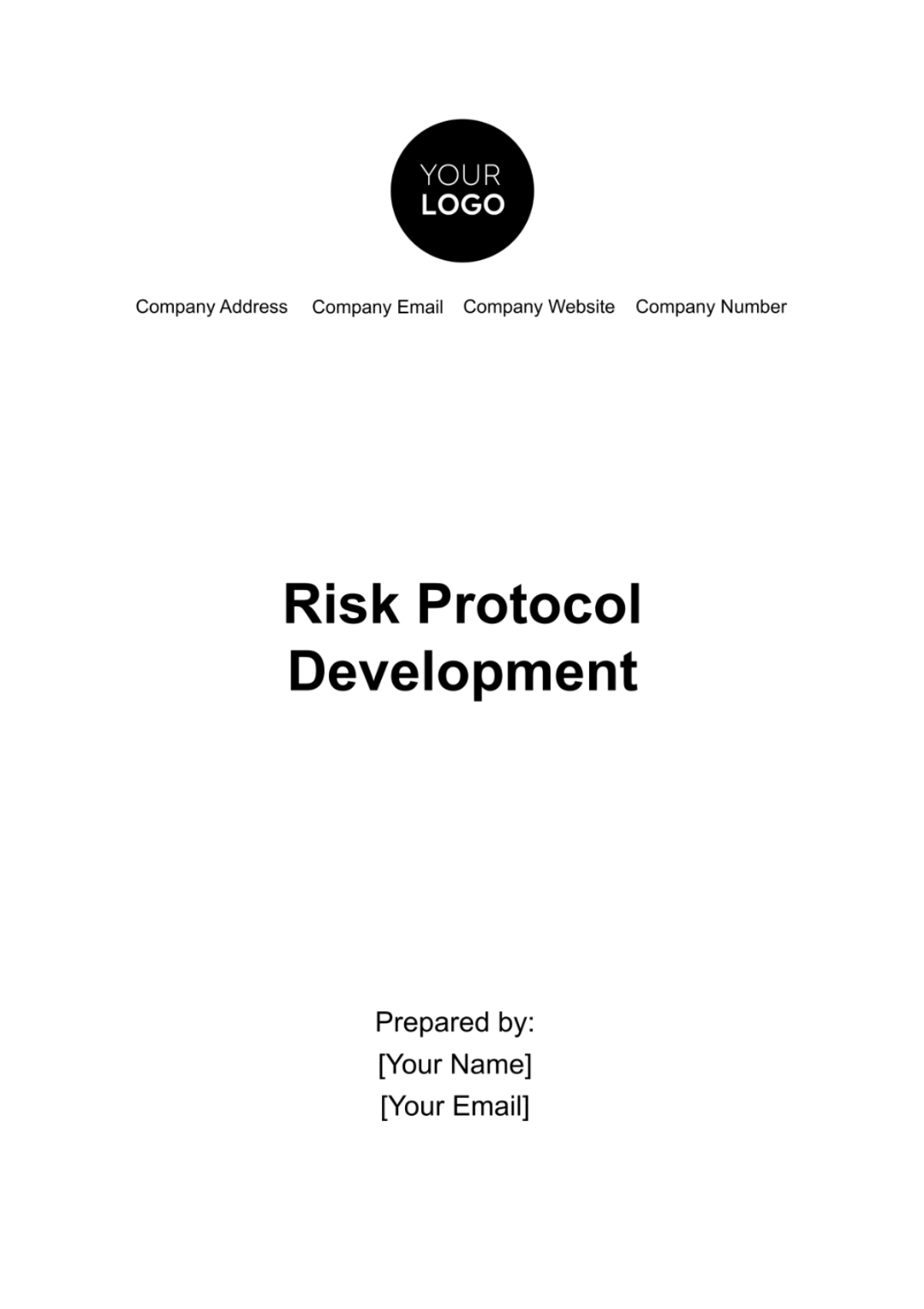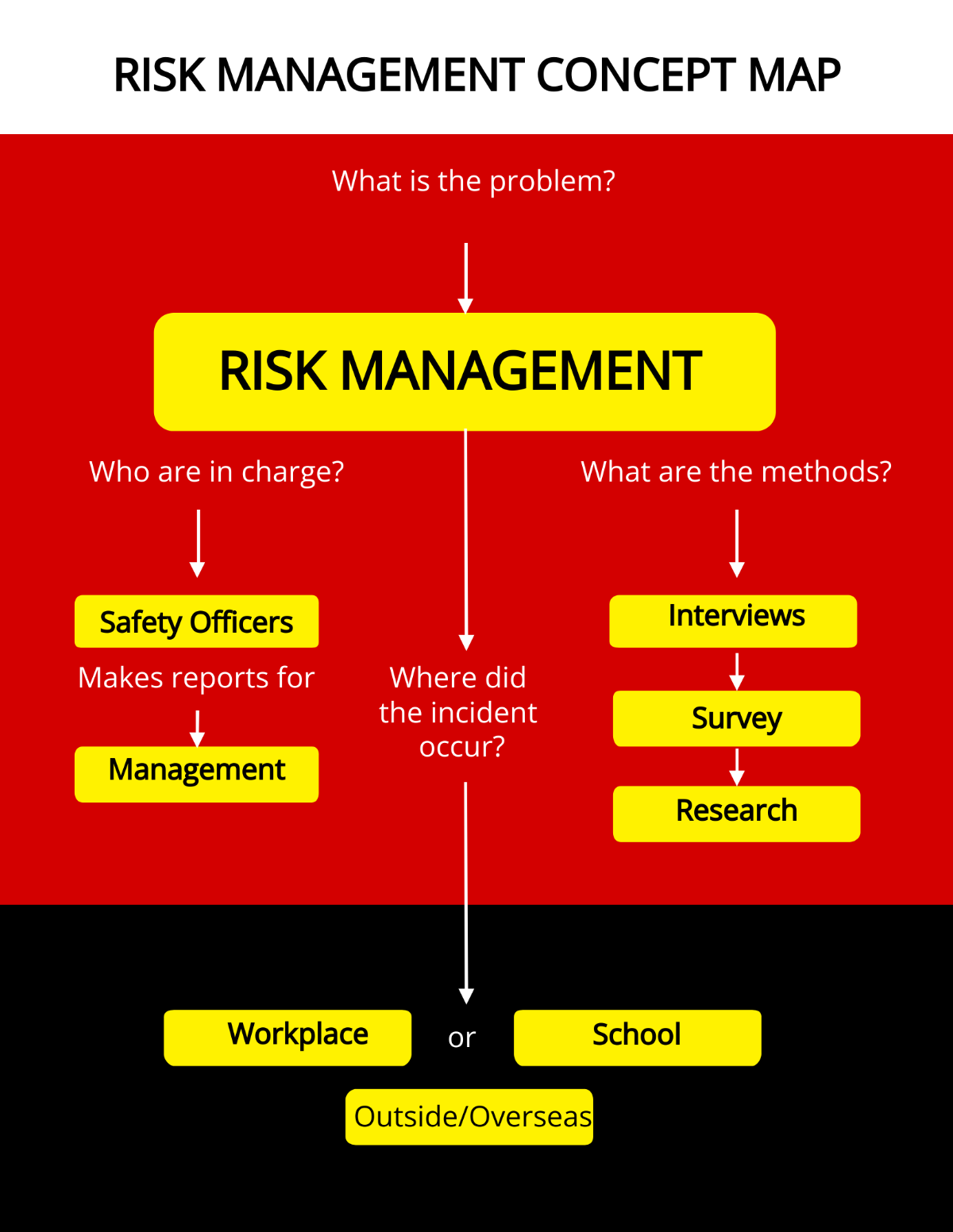Risk Management Methodology
Prepared by: [YOUR NAME]
Date: [DATE]
1. Introduction
The Risk Management Methodology is a structured approach designed to identify, assess, prioritize, and mitigate risks within projects, organizations, or systems. This methodology ensures that potential threats are managed effectively to minimize their impact and achieve desired outcomes.
2. Risk Identification
The first step in risk management is identifying potential risks. This involves understanding the context and scope of the project, organization, or system.
2.1 Tools and Techniques
Brainstorming
SWOT Analysis (Strengths, Weaknesses, Opportunities, Threats)
Checklists
Interviews and surveys
Historical data analysis
2.2 Documentation
Record all identified risks in a risk register which includes a description of each risk, its potential impact, and possible causes.
3. Risk Assessment
Once risks have been identified, they need to be assessed to understand their potential impact and likelihood. This helps prioritize which risks need to be addressed first.
3.1 Qualitative Risk Assessment
Evaluate risks based on their severity and probability using a scoring system.
Risk Probability: High, Medium, Low
Risk Impact: Critical, Major, Moderate, Minor
3.2 Quantitative Risk Assessment
Use numerical data to measure risks and their implications.
Expected Monetary Value (EMV)
Monte Carlo Simulation
Decision Tree Analysis
4. Risk Prioritization
After assessing risks, prioritize them based on their potential impact and likelihood. Focus on high-impact and high-probability risks first.
4.1 Risk Matrix
Use a risk matrix to categorize risks according to impact and probability to visualize and prioritize them effectively.
5. Risk Mitigation
Develop strategies to minimize or eliminate the impact of prioritized risks. Risk mitigation involves planning and implementing actions to manage risks effectively.
5.1 Strategies
Avoidance: Change plans to eliminate the risk.
Mitigation: Reduce the likelihood or impact of the risk.
Transfer: Shift the risk to a third party (e.g., insurance).
Acceptance: Acknowledge the risk and prepare to manage its impact.
5.2 Action Plans
Create detailed action plans that outline specific steps to implement the chosen risk response strategies. Assign responsibilities, set deadlines, and allocate resources accordingly.
6. Implementation
Execute the risk mitigation action plans. Ensure regular monitoring and control throughout the implementation phase to manage risks effectively.
6.1 Roles and Responsibilities
Risk Manager: Oversee the risk management process.
Team Members: Implement risk mitigation actions.
Stakeholders: Provide input and support for risk management activities.
6.2 Monitoring and Review
Conduct regular reviews and monitoring to track the effectiveness of risk mitigation efforts. Adjust action plans as needed to address any issues that arise.
7. Documentation and Reporting
Maintain comprehensive documentation of all risk management activities, including risk identification, assessment, prioritization, and mitigation.
Risk Register Updates
Progress Reports
Meeting Minutes
Final Risk Management Report
8. Continuous Improvement
Risk management is an ongoing process. Continuously seek opportunities to improve risk management practices by learning from past experiences, staying updated with best practices, and incorporating feedback from stakeholders.
8.1 Lessons Learned
Document lessons learned from the risk management process and use them to improve future risk management activities.
8.2 Training and Development
Encourage ongoing training and development for team members to enhance their skills and knowledge in risk management.
Conclusion
Effective risk management ensures that potential threats are minimized and controlled, enabling the achievement of desired outcomes. By following a structured approach, organizations can enhance their resilience and successfully navigate uncertainties.







